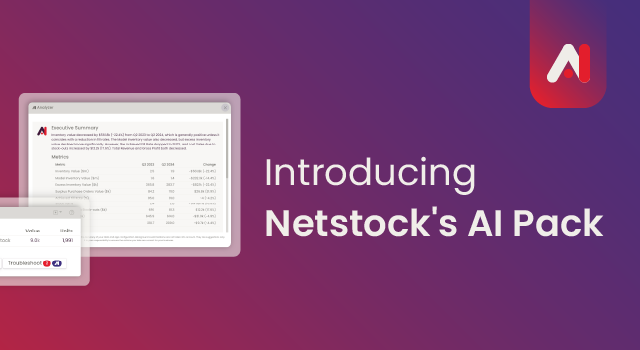Learn how redistributing inventory can transform surplus stock into a valuable asset, reducing supplier costs and boosting sales for your business!
Let’s face it: excess inventory can feel like a weight dragging your business down. But what if it didn’t have to be that way? Imagine turning that surplus stock into a valuable asset that boosts your bottom line. Instead of seeing excess stock as a headache, why not see it as a valuable opportunity? By redistributing your excess inventory, you can save money, free up resources, and open doors to new possibilities for your business.
This article explores a fresh perspective on managing excess inventory. We’ll highlight why implementing a redistribution plan can breathe new life into your business.
Table of contents:
1 The impact of excess inventory
In recent years, supply chain industries have been rocked by external disruptions, from blocked shipping routes to the effects of inflation, conflicts, and climate change. These challenges prompted certain businesses to engage in panic buying, leading to a significant surge in stockpiling. In a recent Netstock survey, 92% of respondents stated that over the last three years, supply chain disruptions have caused a significant increase in inventory.
Industries like fashion and electronics are grappling with significant excess inventory. In the fashion world, fast fashion leads to overproduction and waste, with a staggering 30% of clothing going unsold. On the other hand, the electronics sector struggles with obsolescence and oversupply, leading to massive financial losses. China’s economic slowdown further worsened the global manufacturing inventories. In the tech industry, high-tech component inventories have rapidly moved from a shortage to a glut, disrupting supply chains. These difficulties highlight the importance of advanced inventory management strategies to minimize financial losses.
The hidden costs: Excess inventory ties up cash that could be utilized elsewhere in your business, hindering investment, expansion, or innovation. Storing surplus stock incurs additional expenses and is also subject to depreciation costs. So, the financial burden of excess inventory extends beyond the initial purchase price, eroding profitability and hindering overall business performance.
The hidden risks: Excess inventory places strain on warehousing facilities, leading to potential obsolescence, damage, or theft. Overloaded warehouses may cause inefficiencies in order fulfillment, impacting customer loyalty and satisfaction. Additionally, excess inventory can lead to errors in inventory management, disrupting supply chain operations.
Aquatic AV improved its customer fill rate from 79 – 99% within the first year of using Netstock. They credit this to the visibility they have on the Netstock dashboard.
2 How redistribution saves time and money
Inventory redistribution, as its name suggests, optimizes your resources by distributing surplus stock to where it’s needed without incurring additional costs, such as placing more orders with suppliers. This allows your supply chain to meet demand and use the stock you have to make more profits for your business!
Watch how quickly Netstock redistributes your inventory
Inventory visibility is vital for your demand planning to help avoid further knock-on effects of market changes.
So, before we talk about redistributing excess inventory, can you confidently answer:
- Which stock do you have in excess?
- If you have multiple warehouses, where is the excess located?
- What is the monetary value of that excess?
Three main benefits of redistributing excess stock:
- Optimize inventory holding: by redistributing surplus inventory to where it’s needed, you can avoid stock-outs and ensure you meet demand. This helps free up cash otherwise tied up in idle stock and decreases holding costs such as storage, insurance, and labor costs.
- Reduce spend on supplier orders: when excess stock is available to redistribute, you’re less likely to resort to emergency orders from suppliers during sudden spikes in demand. These emergency orders often incur extra costs like rush fees or expedited transportation charges. By effectively using excess stock, you can better align inventory levels with actual demand, reducing the need for costly surplus orders.
- Reduce lost sales: redistributing excess stock when you’re encountering or projected to encounter stock shortages decreases the risk of lost sales. This proactive approach to inventory management ensures customer needs are met and prevents competitors from seizing market share during periods of high demand.
3 How redistribution saves time and money
Accurate data to identify redistribution opportunities: accurate data helps identify surplus stock and shortages, which can be resolved with the right demand and supply planning tools. With a data-driven approach, inventory can be moved to where it’s needed, optimizing levels and reducing holding costs. Remember, you can’t manage what you can’t measure!
Leverage agile inventory management practices: you should be able to adjust inventory planning in response to changes in supply and demand. Using a single-view dashboard provides visibility to identify fill rates, potential stock-outs or excess stock situations, enabling you to take action where it’s needed most. Automatically classifying and identifying top-selling items helps deploy efforts and resources where needed most, preventing shortages of profitable items and reducing excess stock of slow-sellers.
Continuous monitoring and adjustment: review inventory levels and demand patterns to identify changing redistribution needs. Adjust redistribution strategies accordingly to maintain optimal inventory levels and minimize the risk of stock-outs or excess within your supply chain.
4 Executing a redistribution plan
Assess your inventory needs: first, assess your inventory levels across all locations to identify areas with excess stock or the risk of stock-outs. Analyze your data to understand demand patterns and sales trends for each item and determine where redistribution is needed most. Focus on redistributing items with the highest surplus and those in high demand to maximize the impact of your efforts.
Develop a customized redistribution plan: develop internal transfers between warehouses or partnerships with third-party logistics providers. Streamlining the redistribution process reduces lead times and ensures surplus inventory reaches its destination quickly and cost-effectively.
Execute: monitor inventory levels and demand patterns, adjusting your redistribution strategy as needed to maintain optimal inventory levels and minimize stock-outs. Measure key metrics such as inventory turnover rate and cost savings to evaluate the effectiveness of your redistribution strategy and make improvements over time.
Embrace technology to support your plan: to successfully redistribute stock, you need a demand and supply planning solution that delivers speed, accuracy, and predictive outcomes. Netstock recently launched its Excess Redistribution functionality, which offers users the flexibility to transfer surplus stock seamlessly between locations, whether it’s from one location to many or from many locations to one. Once you’ve selected the destination, an automated transfer order is created directly in your ERP. It’s just that simple!
“At Netstock, we understand managing inventory levels is a balancing act, and optimizing inventory to meet demand efficiently is critical for businesses. With the launch of Excess Redistribution, we are providing SMBs with unprecedented visibility and flexibility to strategically manage their inventory, ensuring goods are where they need to be and when, ultimately enhancing customer satisfaction.” – Barry Kukkuk, Chief Technology Officer and co-founder of Netstock.
5 Final thoughts
Managing excess inventory doesn’t have to be a challenge. With a proactive approach to redistribution, surplus stock can be turned into a valuable asset. The benefits are clear: optimized inventory levels, reduced supplier costs, and improved customer satisfaction.





